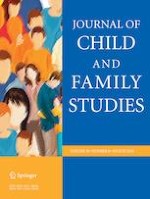22-05-2019 | Original Paper
Bullying and Moral Disengagement in Early Adolescence: Do Personality and Family Functioning Matter?
Gepubliceerd in: Journal of Child and Family Studies | Uitgave 8/2019
Log in om toegang te krijgenAbstract
Objectives
The present study adopted a multi-informant approach to investigate the contribution of personality and family functioning to moral disengagement and bullying-related behaviors in early adolescence.
Method
The sample included 102 early adolescents (53 boys and 49 girls; Mage = 12.21 years). Behaviors during bullying situations were detected by peer nominations. Self-report measures were administered to assess moral disengagement and family functioning. A parent-report was administered to detect personality traits.
Results
Findings of the hierarchical regression analyses (effect size = 0.23, power = 0.95, α = 5%; CI = 95%) showed that extraversion was positively associated with bullying and moral disengagement, while benevolence was positively associated with defending behavior. Family functioning was negatively associated with moral disengagement. Moderation analyses indicated that a low conscientiousness, together with a low family functioning, decreased the likelihood of defending behavior and increased the risk of bullying. High levels of benevolence decreased outsider behavior in students with a high family functioning. Although extraversion was positively associated with bullying and moral disengagement, findings suggested that it increased moral disengagement only among early adolescents with low family functioning.
Conclusions
Overall, findings underline the importance of addressing individual and contextual variables when studying bullying and moral disengagement among early adolescents.
